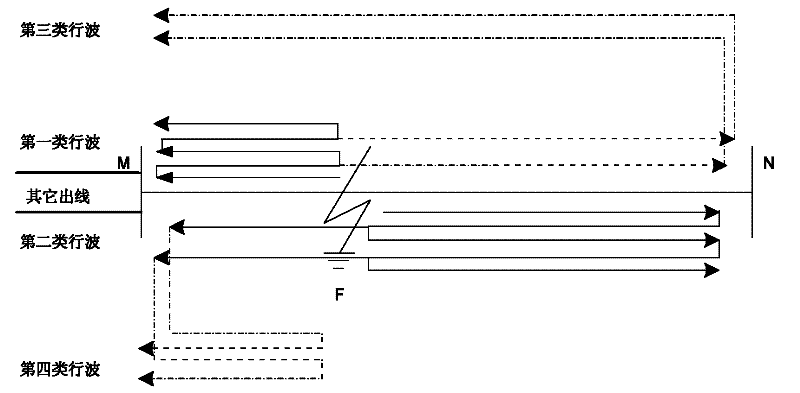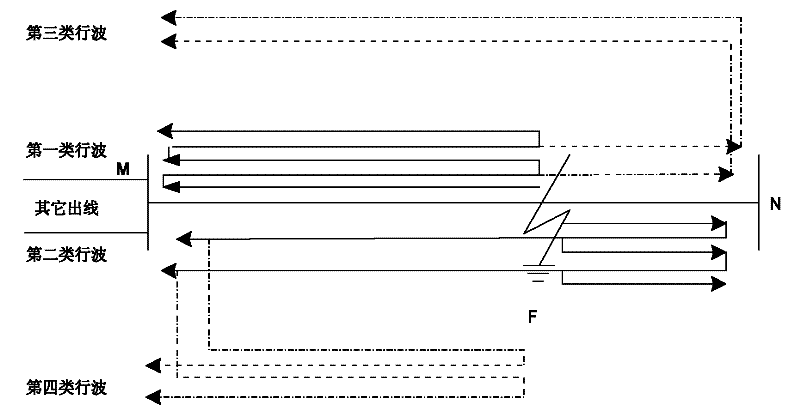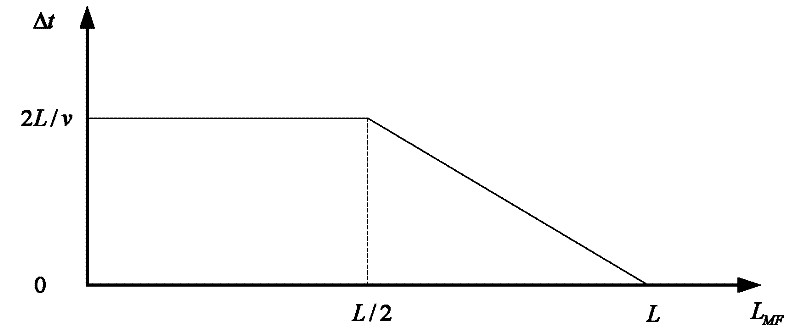A single-ended traveling wave fault location method for transmission lines
A technology for fault distance measurement and transmission lines, which is applied to radio wave measurement systems, fault locations, and measurement devices, can solve problems such as the difficulty of determining the nature of the second traveling wave wave head, and achieve improved reliability and effectiveness and distinctive features Effect
- Summary
- Abstract
- Description
- Claims
- Application Information
AI Technical Summary
Problems solved by technology
Method used
Image
Examples
Embodiment Construction
[0029] The present invention will be further described below in conjunction with the accompanying drawings and embodiments.
[0030] Working principle of the present invention is:
[0031] 1.1 Waveform recognition methods of different bus types
[0032] In the process of traveling wave fault location, the refraction and reflection characteristics of current traveling waves have a great relationship with the types of busbars at both ends of the fault line. From the perspective of considering traveling wave refraction, the busbar types of transmission lines can be divided into the following three categories:
[0033] (1) There is only one outgoing line with a step-up or step-down transformer
[0034] (2) There are two outgoing lines in the busbar, whether there is a transformer or not
[0035] (3) In addition to the faulty line, there are at least two other outgoing lines on the busbar, whether there is a transformer or not
[0036] The current traveling wave will undergo ca...
PUM
 Login to View More
Login to View More Abstract
Description
Claims
Application Information
 Login to View More
Login to View More - R&D
- Intellectual Property
- Life Sciences
- Materials
- Tech Scout
- Unparalleled Data Quality
- Higher Quality Content
- 60% Fewer Hallucinations
Browse by: Latest US Patents, China's latest patents, Technical Efficacy Thesaurus, Application Domain, Technology Topic, Popular Technical Reports.
© 2025 PatSnap. All rights reserved.Legal|Privacy policy|Modern Slavery Act Transparency Statement|Sitemap|About US| Contact US: help@patsnap.com



